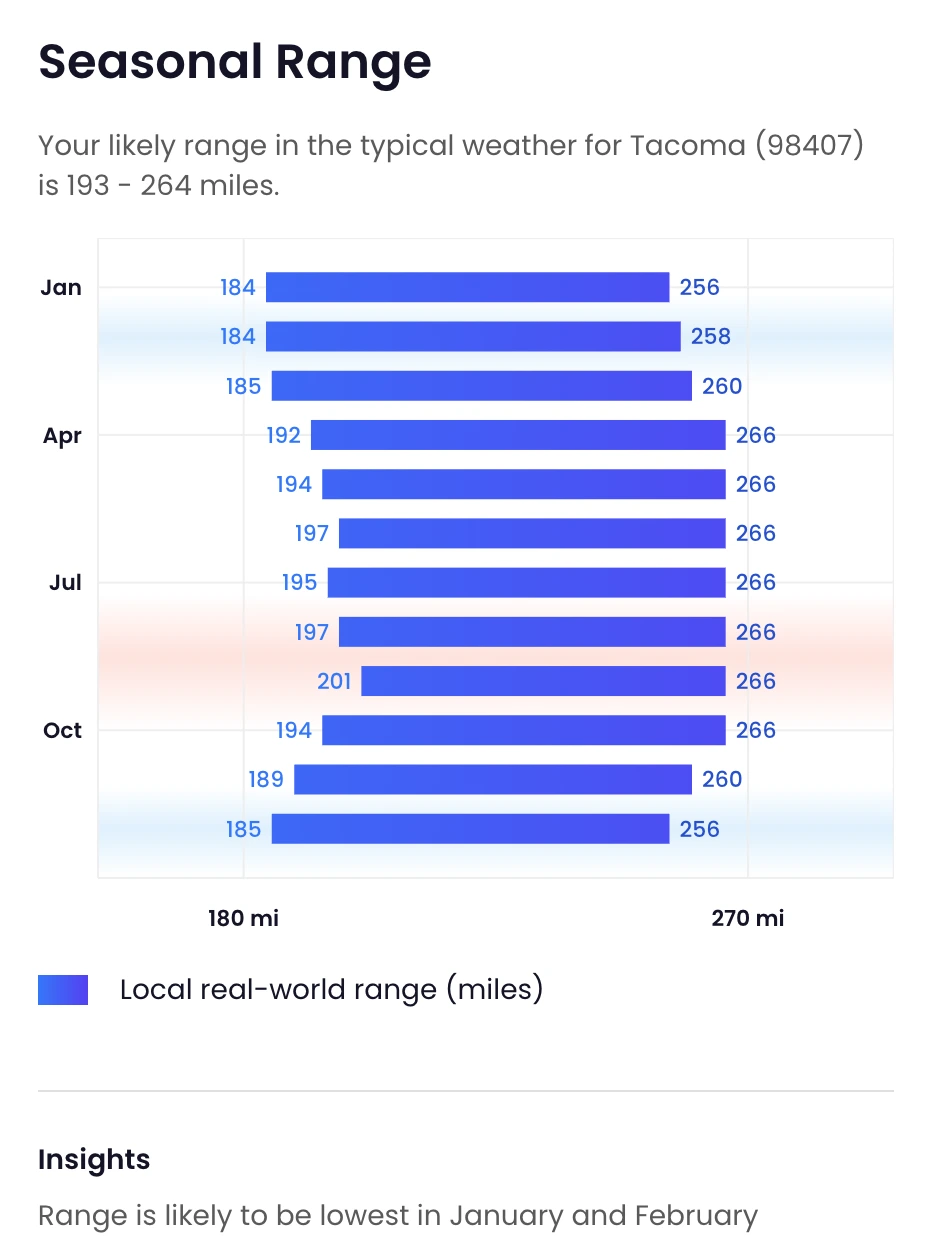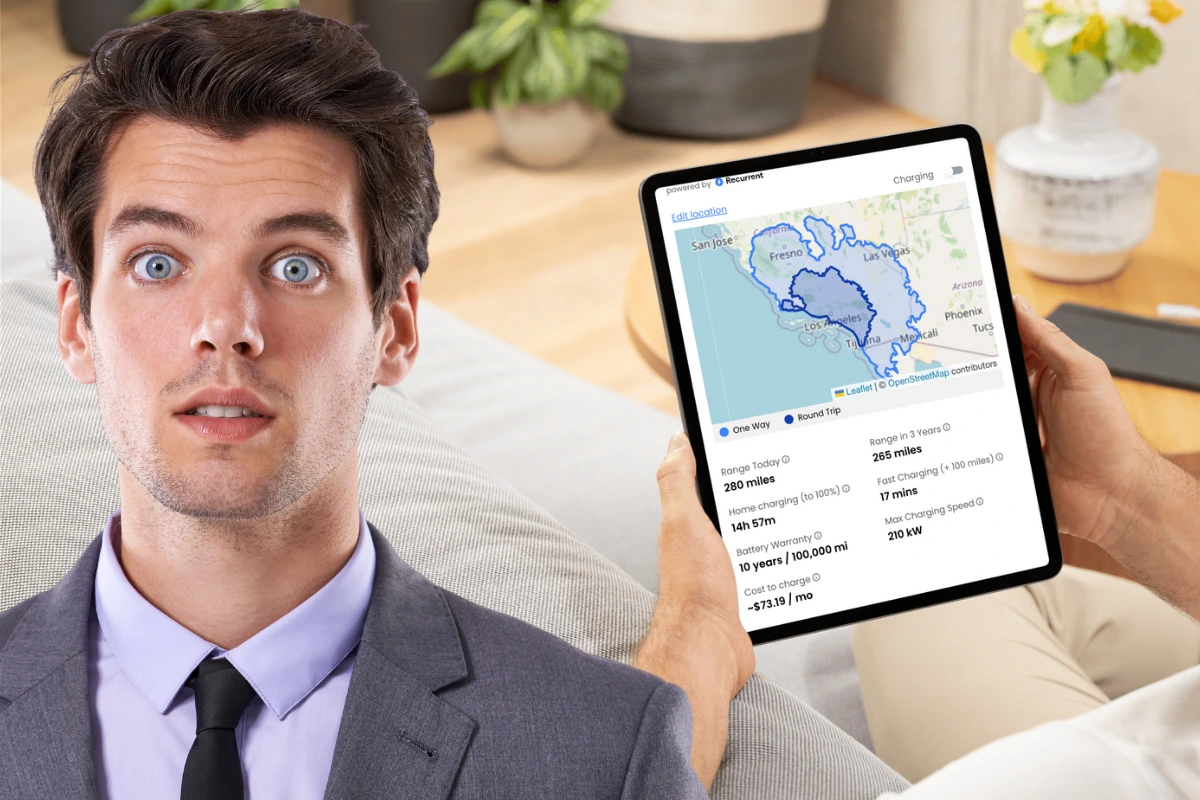The most successful EV dealerships don't overwhelm customers with stats and technical jargon. Instead, they simplify the concepts that matter most to daily driving. Focusing on the practical info, rather than stats, can make shoppers feel more confident.
Here's how the top EV sellers do it, and what other dealerships can learn from them.
Challenge: Range is Kind of Complicated
EV range is often stated as a single number. That’s an unfortunate oversimplification because range can vary by up to 40% depending on several factors. This complexity creates unnecessary anxiety for shoppers who just want to know: "Can this vehicle handle my daily needs?"
Add to that battery pack sizes (kWh) and efficiencies (110 MPGe), and it’s enough to scramble a first-time EV shopper’s brain rather quickly.

Solution: Focus on What Matters
Shoppers need to have range explained in the context of their life and driving habits. Start with these three practical concepts.
1. Typical Range vs. Sticker Range
The best dealerships skip the single EPA government rating to frame range based on expectations: Range today, expected range after 3 years, and seasonal expectations.
Modern EV retailing tools help sales teams instantly show customers: "This VW typically gets 234 miles of range in our region, and should still travel 222 miles on a single charge after 3 years." Simple, honest, and immediately useful.
2. Daily Driving vs. Road Trips
The best salespeople separate these two scenarios. For daily driving, they focus on home charging convenience: "You'll leave every morning with a full charge, just like with your phone."
For road trips, salespeople can show charging station maps and explain: "Add 100 miles in about 12 minutes while you restock your snack supply."
Want to explain charging like the best? Avoid technical specs about charging from 20% to 80% and focus on the ease of charging at home and time to add 100 miles on the road.
3. Temperature Effects (When Relevant)
In colder climates, top dealers address winter range head-on with data. Recurrent's research shows that all vehicles lose efficiency and range in very cold weather. Electric cars are no different.

The good news, however, is that this range loss is temporary and not as limiting as many people may think.
Rather than avoiding the topic, successful dealers say: "In winter, you'll see about 20% less range, but that’s not usually noticeable with daily driving."
The 30-Second EV Range Script
- Every new EV comes with an EPA range rating, like MPG for gas cars. And just like MPG, the real-world results will vary.
- Range depends on your driving style and the outdoor temps. Just like with MPG, cranking the heat or A/C will have an effect.
- Most modern EVs can travel 200–300 miles per charge, which is enough for a week of driving for the average American.
- If you’re curious about a specific make or model, we use Recurrent to show real-world performance based on thousands of similar vehicles.
The Payoff: Higher Satisfaction and Sales
When dealers focus on practical range education rather than technical specifications, customers feel more confident about their purchase decisions.
EV shoppers expect dealers to be knowledgeable on topics of importance to new EV owners, including range, maintenance, charging, and battery life, according to a survey by Cox Automotive. Range education is table stakes for building this expertise.





